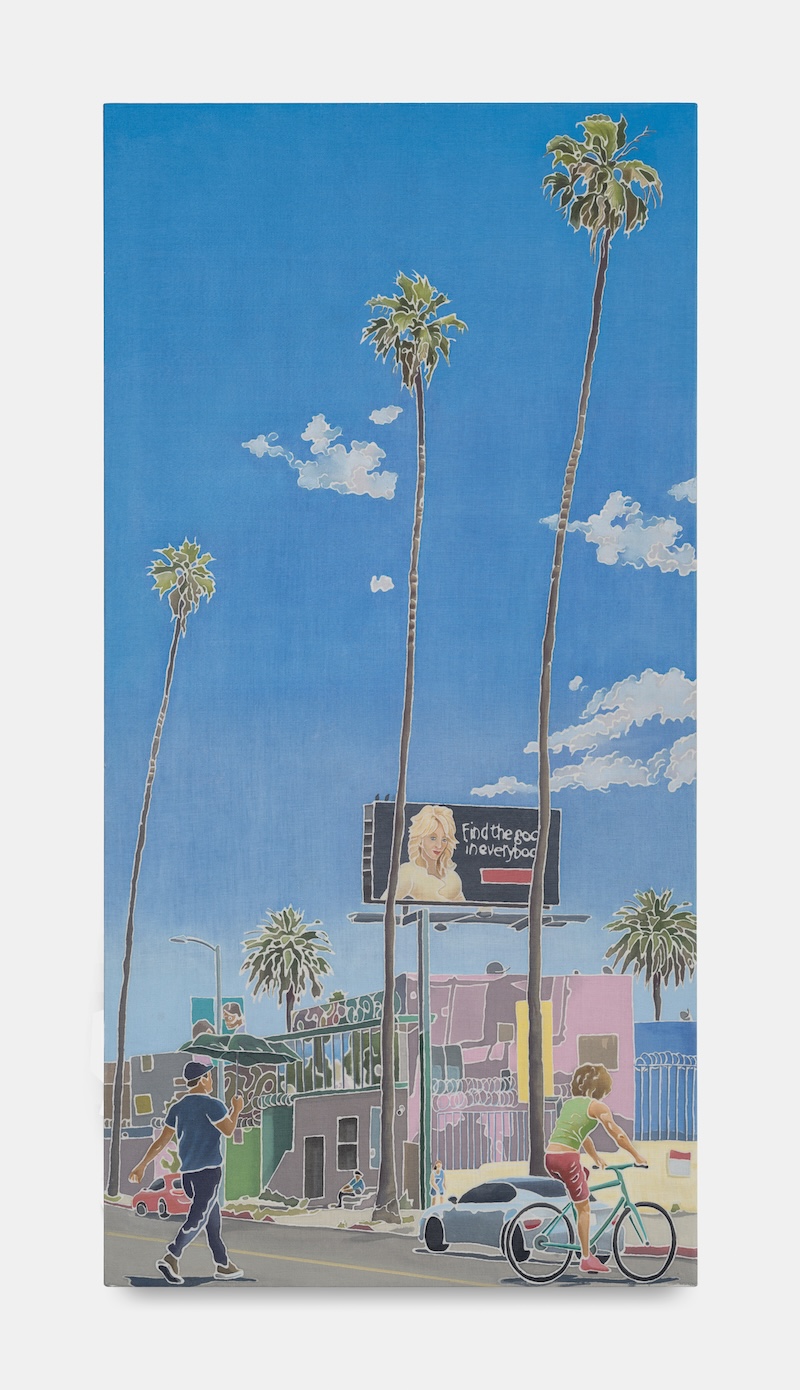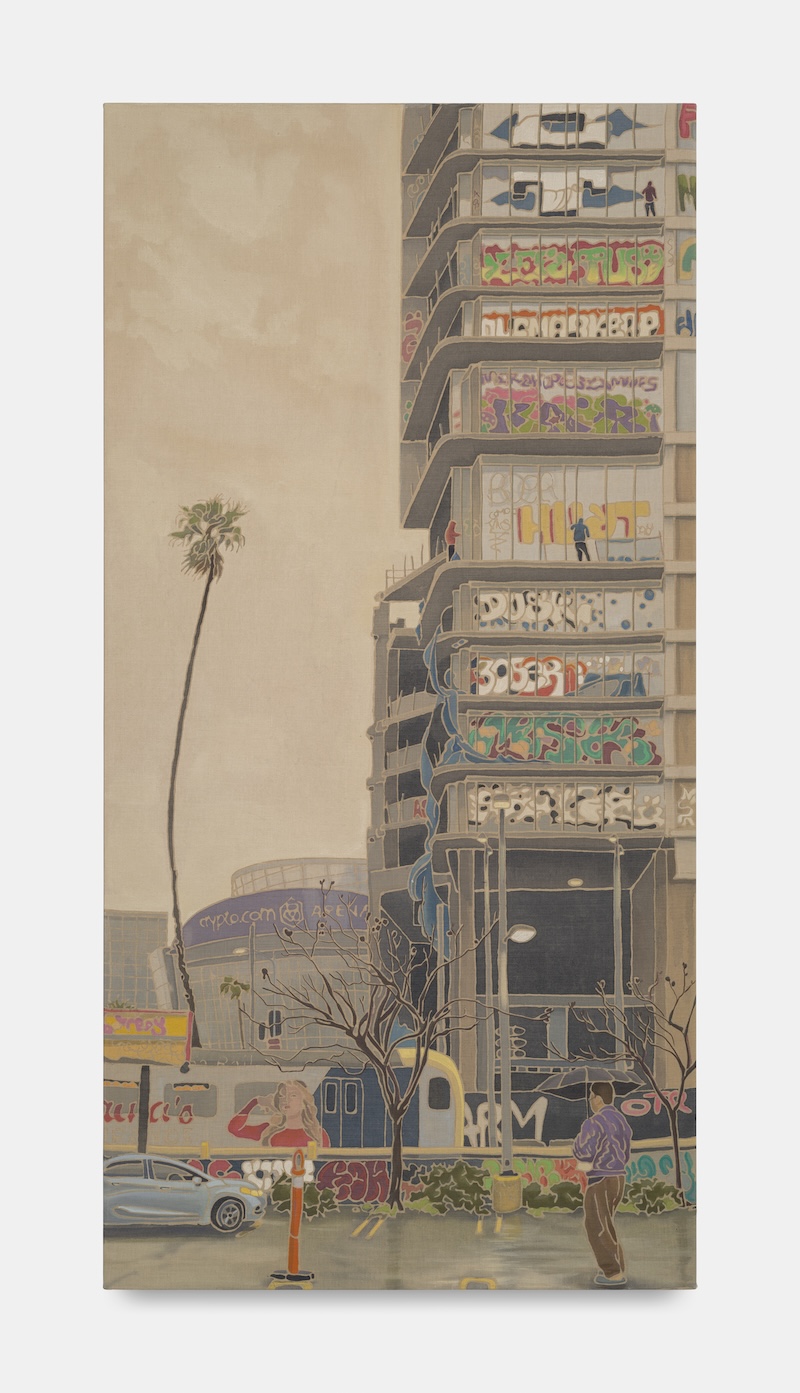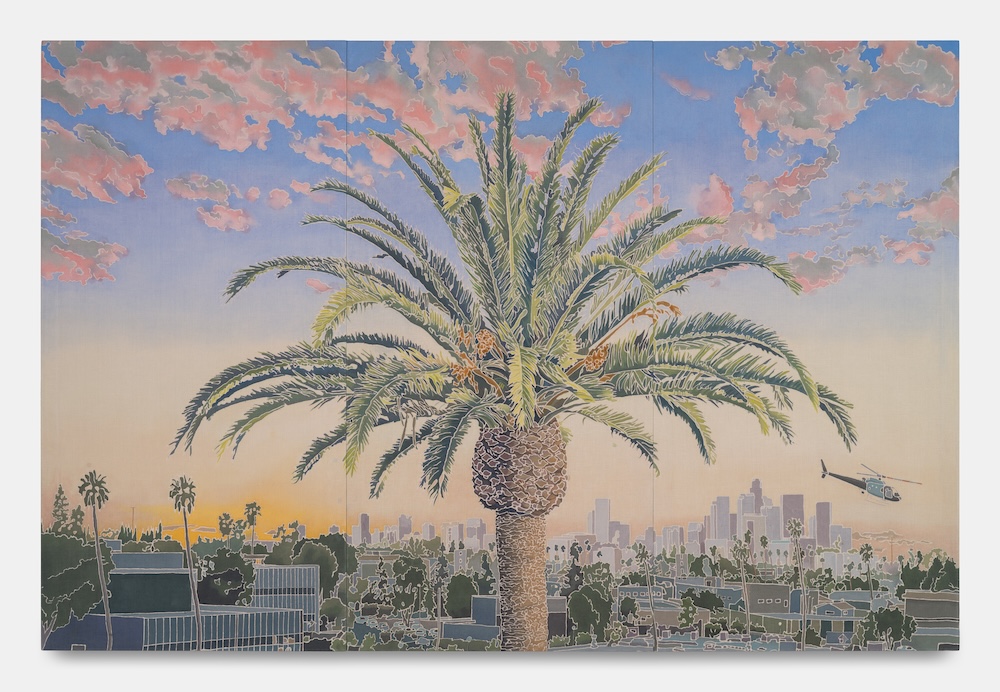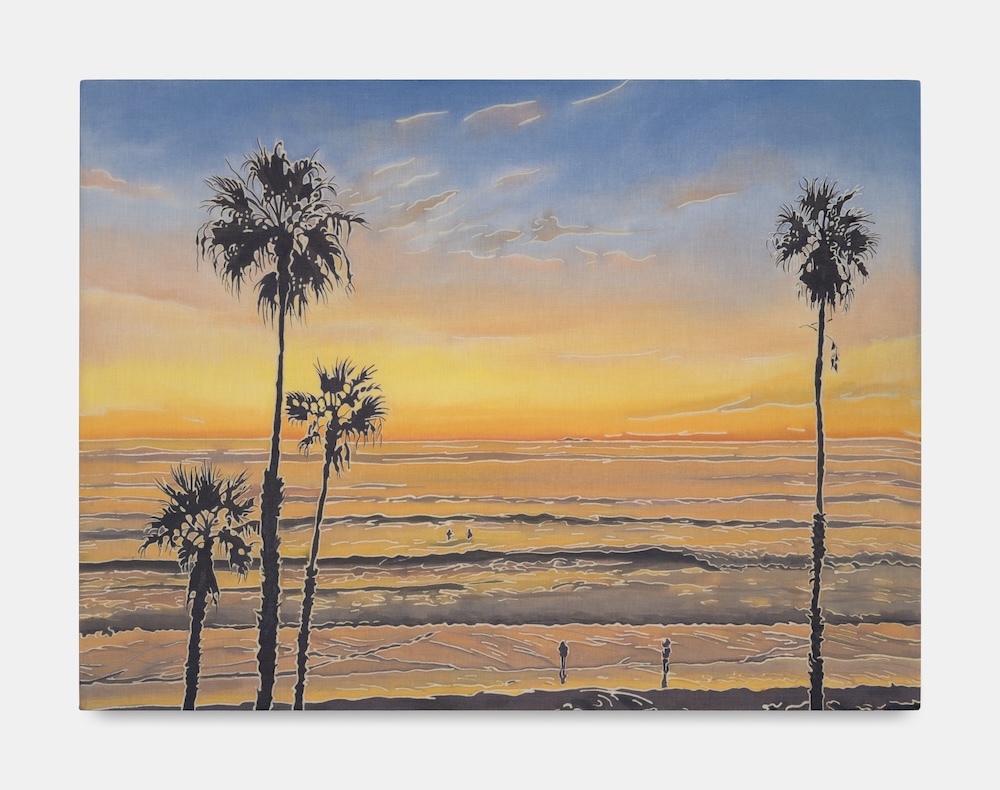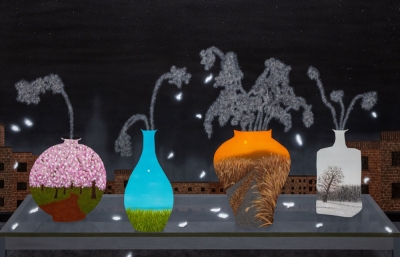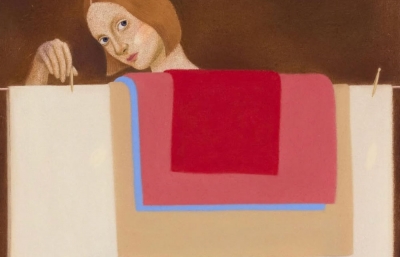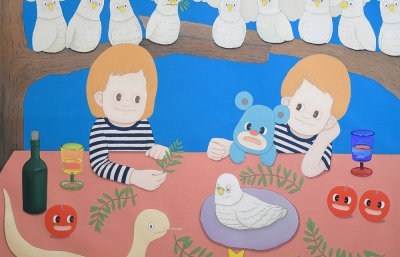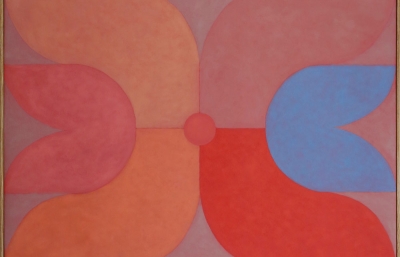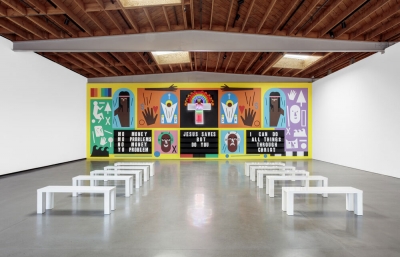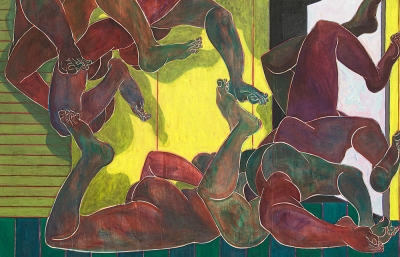Plato is thrilled to present Edge City, Adam de Boer’s first solo exhibition in New York. The practice of the LA-based artist has been informed by his Dutch-Indonesian roots. For over a decade, he has explored the wax-resist fabric dyeing technique of batik to connect to his cultural forebears. De Boer draws elaborate imagery on linen with melted beeswax poured through a metal device called a canting, applies acrylic washes to unaffected areas and then boils out the wax, sometimes repeating the process over and over to achieve the desired effect. More recently, he has been combining batik with Western oil painting, challenging the dichotomy of fine art and craft, and attempting to reconcile and celebrate his own hybrid identity.
In this recent series of paintings, de Boer immortalizes Southern California as a place where migration, intercultural exchange, urban sprawl and economic globalization are affected by and contribute to its ever changing landscape. The sinuous, meandering batik line formed by wax-resist prompts viewers to see the postmodern La-La Land and its environs, an embodiment of American fiction, in a strange and novel way while highlighting its messy construction. By contrast, de Boer’s extraordinary ability to render atmospheric effects endows the batiks with an almost photorealistic quality. Whether it’s a sunset over the ocean affected by nearby fires and Santa Ana winds, the angelic blue of Los Angeles’ sky on a clear day, or a smoggy Downtown afternoon – anyone who is familiar with these sites is guaranteed a round of nostalgia.
Edge City explores the juxtaposition of distinct landscapes throughout the region, where contrasting environments, such as mountains and sea, have led to changes in population and community structures, a phenomenon ecologists call the “edge effect.” This effect usually leads to a greater biodiversity within these bordering areas. De Boer’s LA is teeming with plants and wildlife. Red Crowned Amazon Parrots, thriving in Southern California since the 1970s – to the point that they outnumber their population in their native Mexico – blissfully fly above Glenoaks backyards, camouflaged against the once-imported tropical foliage of the pool-peppered backyards. Coyotes, endemic to these lands, snack on leftovers of worker’s lunches on the moonlit parking lot above The Grand LA, the luxurious hotel and condo complex designed by Frank Gehry and housing international elites.
Palm trees, ubiquitous in these parts of California, are found in almost every work in the show. Hardly a native species, the water-loving palms were first brought to the dry desert by the Spanish Catholics to provide props for Lent Masses and were later used for landscape decoration. They eventually turned into a popular icon encouraging tourism and the growth of the housing market. Bringing to mind Hollywood and social media cliches, de Boer’s works are also meant to evoke Mooi Indie, the painting genre that captured romantic and serene depictions of the Dutch East Indies (now Indonesia), introduced during the 19th century to attract tourists and often seen as a form of cultural colonization.
Mixed in with ideas of decolonization and environmental critique, de Boer’s own warm memories of Californian locales permeate his paintings. The lead-gray waters of Devereux Beach, where the artist surfed during his years as a student at the University of California, Santa Barbara, are displayed parallel to the hiking trails in the rolling hills of Eastside LA, his long-time home, with the contrasting skyscrapers of Downtown in the background. The crisp blue sky above the snow-capped mountains towering over the sunflowers in the valley below in his native Redlands is as dear to de Boer as the scarlet sunset shining on the spider that weaves his web ahead of the rainy winter in Silverlake.
After years spent learning from local artisans in Indonesia and studying old master paintings in European museums during his MFA in London, de Boer has found an ultimate muse in his native Southern California. Los Angeles and its surrounding neighborhoods continue to provide him with an infinite supply of ideas and imagery to experiment with the medium for which he has a deep respect. De Boer’s long-standing love for batik has made it possible for him to expand its boundaries and challenge cultural stereotypes associated with its use. The artist’s New York debut is a further step in introducing it to new audiences.








